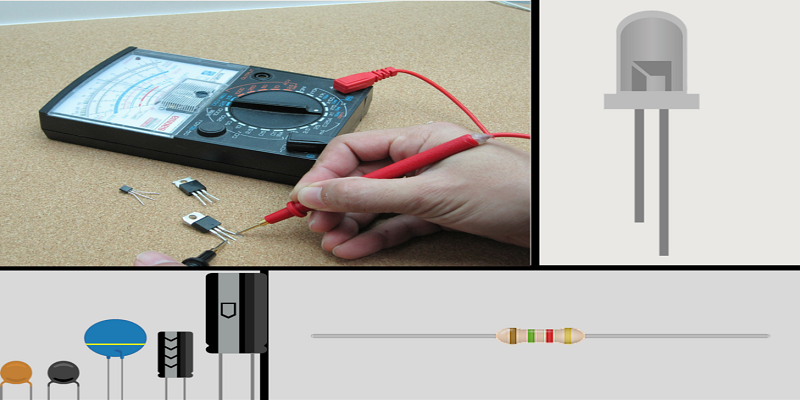In the realm of electrical engineering, capacitors play a pivotal role in the functionality and performance of electronic circuits. These versatile components store and release electrical energy, enabling a wide range of applications across various industries. In this comprehensive blog post, we will delve into the inner workings of capacitors, exploring their mechanisms, types, and practical implementations. Join us on this enlightening journey as we unravel the mysteries behind how capacitors work in a circuit.
- Understanding Capacitors:
1.1 Capacitor Basics:
- Definition and Structure:
- A capacitor is an electronic component that stores and releases electrical energy.
- Composed of two conductive plates separated by a dielectric material.
- Capacitance:
- Capacitance determines the amount of charge a capacitor can store.
- Measured in Farads (F), typically in microfarads (μF) or picofarads (pF).
- Voltage Rating:
- Indicates the maximum voltage a capacitor can withstand without failure.
1.2 Capacitor Behavior:
- Charging and Discharging:
- Capacitors charge when connected to a power source, storing energy.
- Discharge occurs when the power source is removed, releasing stored energy.
- Time Constants:
- Time constant determines the rate at which a capacitor charges or discharges.
- Influenced by capacitance and resistance in the circuit.
- Capacitor Types and Applications:
2.1 Electrolytic Capacitors:
- Construction and Characteristics:
- Utilize an electrolyte as the dielectric material.
- High capacitance values and compact size.
- Applications:
- Widely used in power supply circuits, audio systems, and electronic devices.
2.2 Ceramic Capacitors:
- Construction and Characteristics:
- Composed of ceramic materials as the dielectric.
- Available in various capacitance values and voltage ratings.
- Applications:
- Found in decoupling circuits, RF filters, and timing circuits.
2.3 Film Capacitors:
- Construction and Characteristics:
- Dielectric material is a thin film deposited on the conductive plates.
- Offer high stability, low losses, and excellent temperature performance.
- Applications:
- Used in motor drives, lighting systems, and power factor correction circuits.
2.4 Tantalum Capacitors:
- Construction and Characteristics:
- Employ tantalum as the dielectric material.
- Compact size, high capacitance, and low leakage current.
- Applications:
- Commonly used in portable electronics, telecommunications, and medical devices.
- Practical Considerations and Circuit Design:
3.1 Capacitor Selection:
- Factors to Consider:
- Capacitance value, voltage rating, and tolerance.
- Temperature stability, ESR (Equivalent Series Resistance), and ESL (Equivalent Series Inductance).
- Application-Specific Considerations:
- Power supply filtering, signal coupling, timing circuits, etc.
3.2 Capacitor Placement and Layout:
- Minimizing Parasitic Effects:
- Reducing ESL and ESR through proper placement and routing.
- Isolating sensitive components from noise and interference.
Conclusion:
Capacitors are indispensable components in modern electronic circuits, enabling a myriad of applications across industries. By understanding the intricacies of how capacitors work, their types, and practical considerations, engineers and enthusiasts can harness their power effectively. From electrolytic capacitors to tantalum capacitors, each type offers unique characteristics suited for specific applications. So, the next time you encounter a circuit, remember the vital role capacitors play in shaping our technological landscape.


